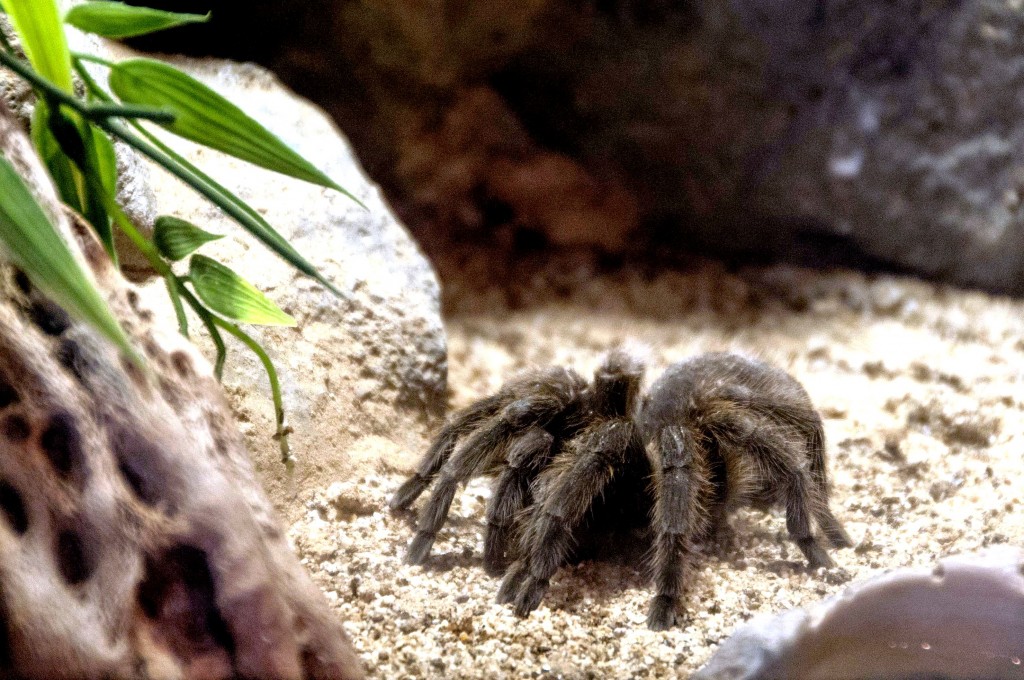Tarantulas- delightful desert dwellers
by Lindsay Bradshaw, Animal Care Manager
When people ask me, “What is your favorite animal?” I have a hard time replying. It sounds like a simple enough question because someone who works with animals surely has one that sticks out above the rest, but I truly have a place in my heart for each and every animal on this planet – even spiders and creepy crawlies.
Today, I want to talk about the desert tarantula, a unique animal that falls under the category “arthropoda” on the taxonomic tree. For some science background, the taxonomic tree is a way to organize animals into groups, with each animal sharing certain characteristics at different levels of the tree. Arthropods are characterized by having no backbone, an exoskeleton, a segmented body, and jointed legs. Spiders are “cousins” with other arthropods like insects and crustaceans. 
The cool thing about desert tarantulas is that they are so well adapted to their environment, which can be very harsh with temperature extremes and very little water and shelter. To stay protected, these spiders live in burrows in the ground. The burrows offer a shady, cooler spot to spend the day, where temperatures can easily reach over 100 degrees. They come out at night when temperatures are a little more bearable. Once they emerge from their burrows, it’s time to feed. They will seek out small insects, beetles, and other smaller spiders to feast on. Tarantulas don’t have teeth, so they rely on the venom from their fangs to liquefy their prey, and they suck it up like a milkshake. A tarantula bite is not particularly dangerous to humans, but it could sting a little- like a bee sting.
Tarantulas have another creative way to defend themselves against predators like weasels, hawks, owls, skunks, and snakes: mildly venomous barbed hairs on their backs called “urticating hairs”. They can use their rear legs to brush off the hairs into the air around their attacker, hopefully deterring them and allowing the spider a chance to escape.
The biggest threat to tarantulas, however, is not their natural predators. Humans have developed much of the land that tarantulas call home, and they are losing the habitat that they need to survive. Deserts and dry grasslands are becoming more and more urbanized. Though the desert tarantula is not an endangered species, habitat loss could make it vulnerable in the future. We must continue to protect these environments for all the animals that call it home, even the creepy crawlies.
 Lindsay Bradshaw is the Animal Care Manager at the Living Coast Discovery Center. She has worked for several animal-focused organizations, including Birch Aquarium at Scripps, Nature and Raptor Center of Pueblo, Maui Ocean Center, and the Vancouver Aquarium.
Lindsay Bradshaw is the Animal Care Manager at the Living Coast Discovery Center. She has worked for several animal-focused organizations, including Birch Aquarium at Scripps, Nature and Raptor Center of Pueblo, Maui Ocean Center, and the Vancouver Aquarium.